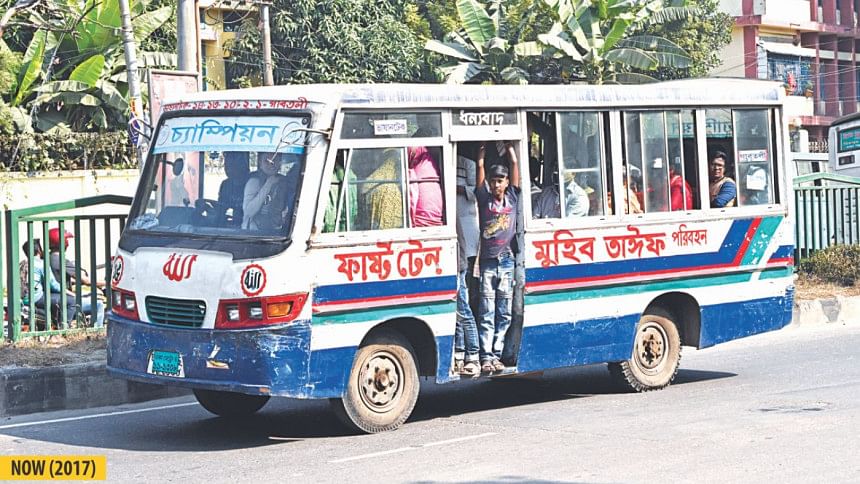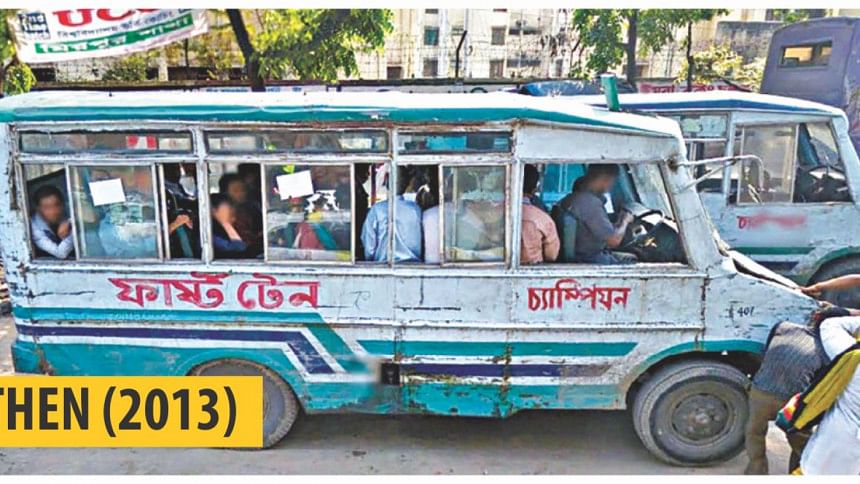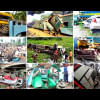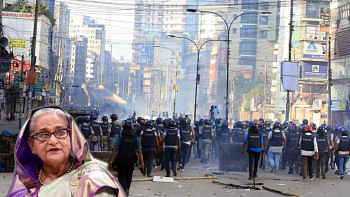Illegal, but who cares?

They consider Tata engines grossly underrated. If a “Tata human haulier” is capable of carrying double the passenger-load than what they usually do, then why not turn them into minibuses?
All it needs is a little improvisation; ingenious indeed!
While not lawful, this is an aspect that hardly matters as far as Dhaka streets and their diverse array of public transports are concerned.
If you're a regular Mirpur-Gabtoli route traveller, in all likelihood you must have had a trip or two already on board dozens of such improvised minibuses.
Once, these were Indian made human hauliers with a maximum passenger carrying capacity of 15. Modifications have turned them into minibuses. Now, these so-called minibuses carry 30 sitting people and a lot more standing.
Interestingly, the “Champion-Fast Ten” -- as these improvised vehicles are called, had all been registered with the Bangladesh Road Transport Authority (BRTA) as “human hauliers”. Converted to “minibuses”, these now run in the vicinity of the BRTA office in Mirpur.
"Tata engines are really powerful," said a smiling under-aged helper of one of these improvised vehicles. "Although it's made as a human haulier now it endures the load capacity of around 40 people after getting the shape of a minibus," he explained.
Pretending to be a businessman interested in investing in the transport business, this correspondent recently visited one of many workshops capable of turning the human hauliers into minibuses in Mirpur-14.
Daud Hossain, who builds bodies of vehicles, said he had converted three human hauliers into minibuses at his workshop in East Lalsarai, a few yards away from the BRTA office.
"Length of the human haulier will be increased by 7-feet and the width by 7 inches, which will make the vehicle up to 22 feet long and 6.5 feet wide. A total of 30 seats will be installed in the vehicle and there will be no need to change the shock absorbers or the wheels. The total cost of the remodelling would be Tk 2.75 lakh," Daud explained.
There are many workshops in the city where one can “remodel” their human hauliers, Daud added.
This phenomenon began around five years ago in the capital and most of the human hauliers based on the Tata 407 had been converted into minibuses.
At Mirpur-14 intersection, drivers and helpers of these converted minibuses were seen inviting passengers to the vehicles. To cram in 30 sitting-passengers, the seats are made very tiny and uncomfortable.

Once these vehicles get full, the helpers start pushing standing passengers towards the back of the vehicle and try their best to accommodate as many as possible.
Its heyday for unscrupulous transport operators as they now carry 40 passengers instead of 15 in one go.
“Ignoring all these, we've become used to travelling on these vehicles … ,” said passenger Aminul Islam, a resident of Kafrul area.
Seeking anonymity, one of the owners of “Champion-Fast Ten” told The Daily Star that they face various problems in running their service of about 50 vehicles, including frequent maintenance work and obstruction by police.
BRTA Assistant Director Nasir Uddin said, in two phases, once in 2002 and then again in 2010, a total of 116 human hauliers got permits for this route.
The vehicles were registered as human haulier and authorised to carry up to 15 passengers, he said. He acknowledged receiving complains about overloading.
Pallabi Traffic Zone Assistant Commissioner Saika Pasha told The Daily Star that a drive against such unauthorised vehicles goes on regularly but sometimes those are interrupted due to manpower crisis.
Some six vehicles had been impounded, she said.

 For all latest news, follow The Daily Star's Google News channel.
For all latest news, follow The Daily Star's Google News channel. 








Comments